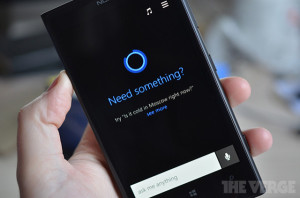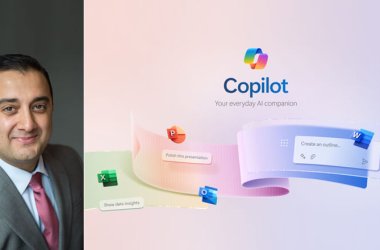 Joe Belfiore, a corporate vice president with the Windows Phone group, demonstrated Cortana responding to a variety of voice commands, including requests for Web information and instructions to perform calendar tasks.
Joe Belfiore, a corporate vice president with the Windows Phone group, demonstrated Cortana responding to a variety of voice commands, including requests for Web information and instructions to perform calendar tasks.
“Cortana is a truly personal digital assistant,” he said during the opening keynote Wednesday at the company’s Build conference in San Francisco.
Cortana is currently in beta and is part of Windows Phone 8.1, the latest version of Microsoft’s OS for smartphones. Cortana is powered by the Bing search engine and “fully replaces” the existing search function on Windows Phone, he said.
Users can choose to make a wide range of information available to Cortana, so the application can use it to make personalized recommendations and suggestions for a variety of situations and scenarios.
“The user is in control of his or her relationship with Cortana,” he said.
Belfiore showed how it’s possible to “tell” Cortana to initiate a phone call, add or modify entries to the calendar, display flight updates, log reminders, set alarms and launch and interact with third-party applications, like Facebook and Hulu.
As a Web search engine, Cortana can be told, for example, to find the best Mexican restaurants in a particular city, which it does by tapping Yelp reviews and ratings, then narrow the list down to those that take reservations, and then place a call to one of them.
APIs (application programming interfaces) will allow developers to build applications for Cortana, he said.
Although Cortana’s main attractiveness is its voice recognition capability, users can also interact with it via text queries.
Microsoft also showed new features for enterprises in Windows Phone 8.1 in areas such as MDM (mobile device management) and encrypted email messaging.
Belfiore also demonstrated an update to Windows 8.1 that’s slated for availability next week. As expected, this update of Windows 8.1 focuses on catering to desktop users who have been complaining since the release of Windows 8 in October 2012 that the OS is inconvenient to use with mice and keyboards.
For example, Windows 8.1’s update makes it more organic for users to access and toggle between both the new Modern tile-based applications and the traditional ones by making the Windows taskbar more prominent and present in the interface.
Microsoft has also added new ways of rearranging the Modern start-screen interface’s live tiles by right-clicking on a mouse, and selecting multiple tiles by holding down the control key and shifting them around with the mouse. The company has also added a tile to trigger the PC settings menu.
A “power” button to turn the computer on and off and a search button are now always visible in the Modern interface, whereas before they had to called up.
Belfiore also showed how Internet Explorer 11 has been updated so it can be used to view and render legacy websites, a feature called “enterprise mode,” aimed primarily at companies with old intranets that their employees still need to access with, for example, IE 8.
He clarified that these new mouse-and-keyboard features haven’t been added at the expense of the touchscreen functionality already present in the OS since its Windows 8 initial release, which all remain.
Microsoft also gave a quick peek at the much-awaited “touch first” version of its Office suite for the tile-based Modern interface in Windows 8 and 8.1 devices, which ironically will arrive after the version for iPads, launched last week.
Kirk Koenigsbauer, a corporate vice president with the Office team, showed a pre-release version of PowerPoint for touchscreens, highlighting that the “ribbon” menus are consistent with the desktop version of the suite, but optimized for touch.
As Microsoft develops this “touch first” version, it wants to make sure the applications provide an “unmistakably Office experience” across devices of all sizes, such as small tablets and large touch-enabled screens, he said.
In addition to replicating the “ribbon,” that means replicating advanced features, capabilities and elements in the applications, like inserted pictures and graphics in Word and “inking” in PowerPoint that lets presenters circle things in slides on the fly.
He didn’t say when this “touch first” version of Office will be ready.





